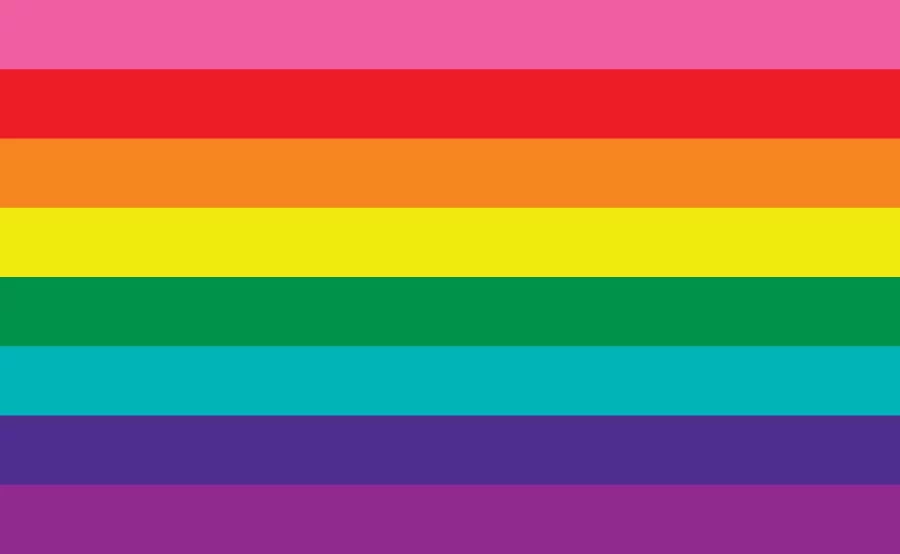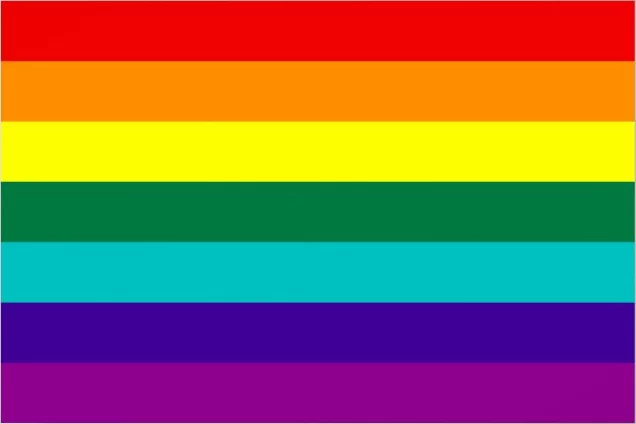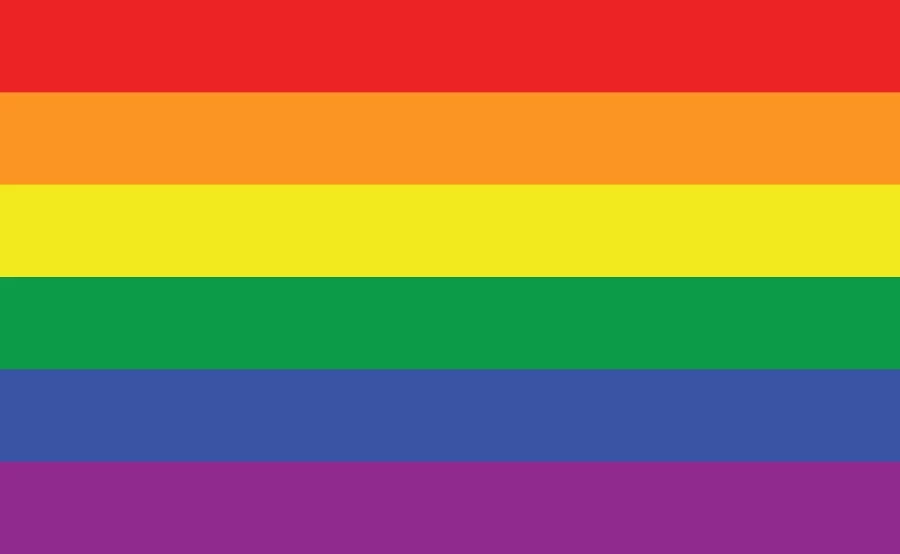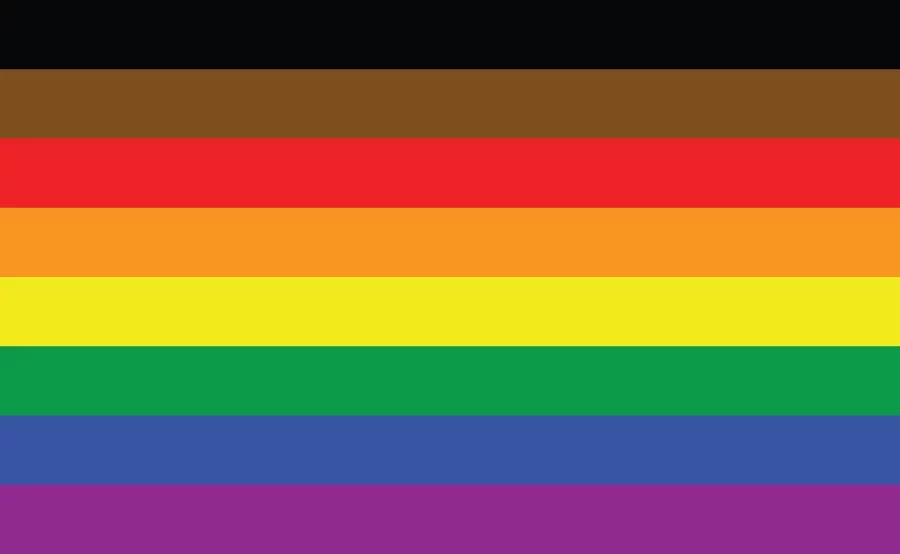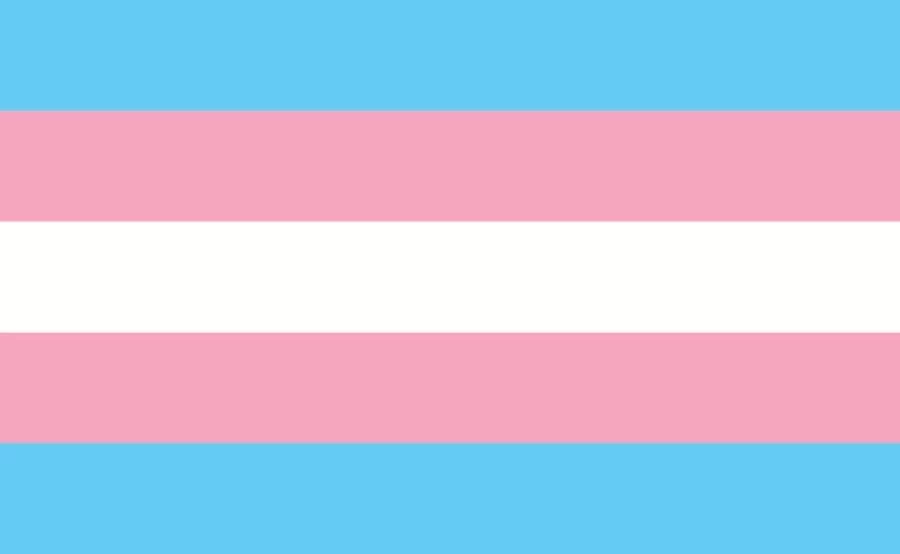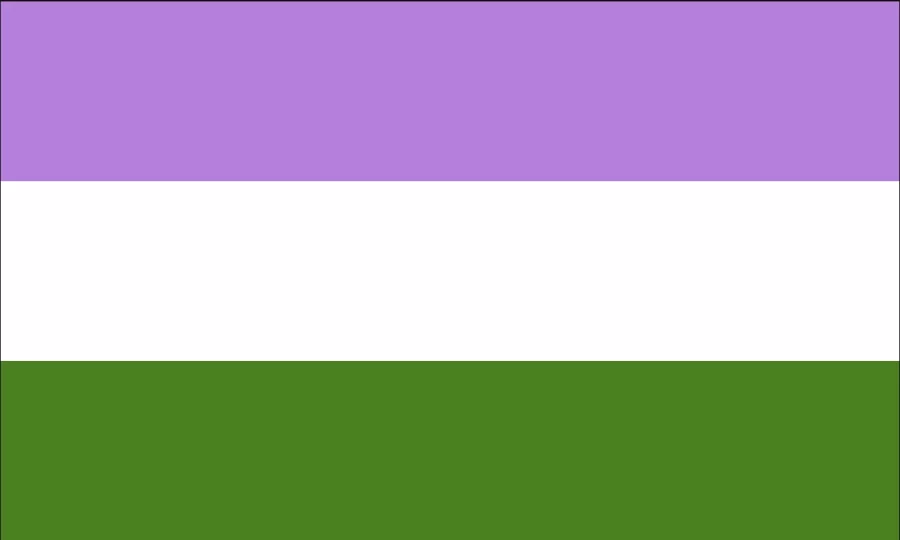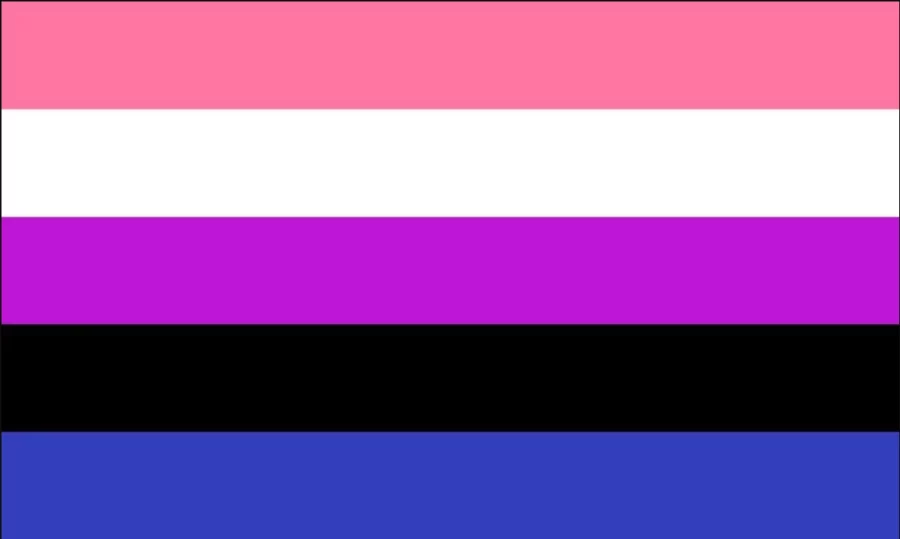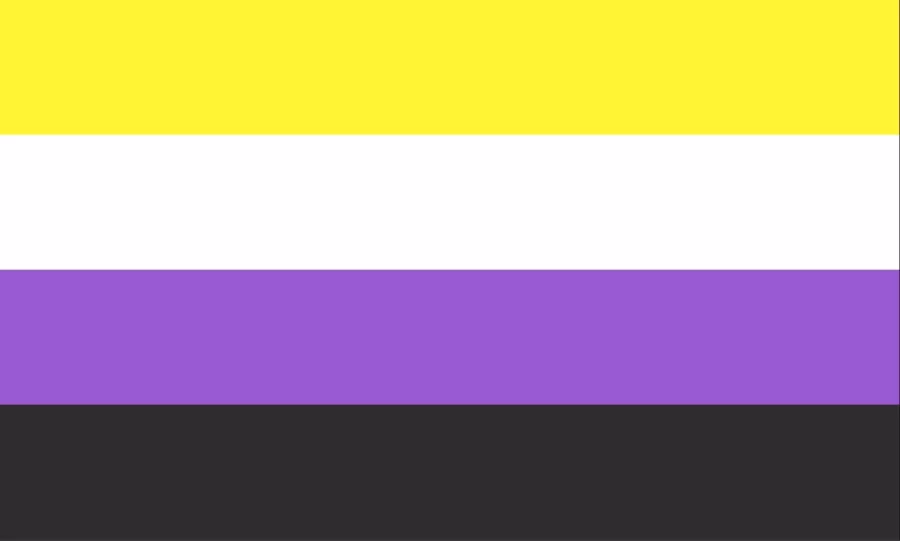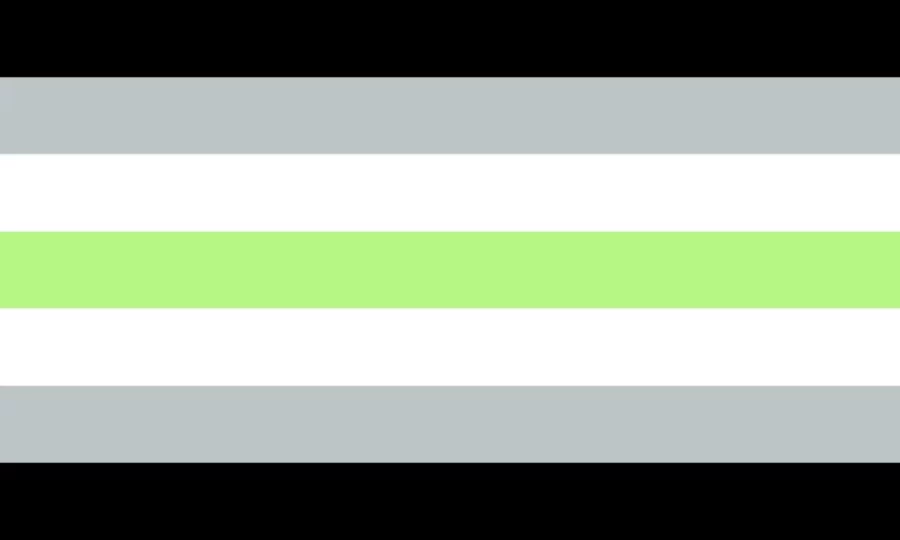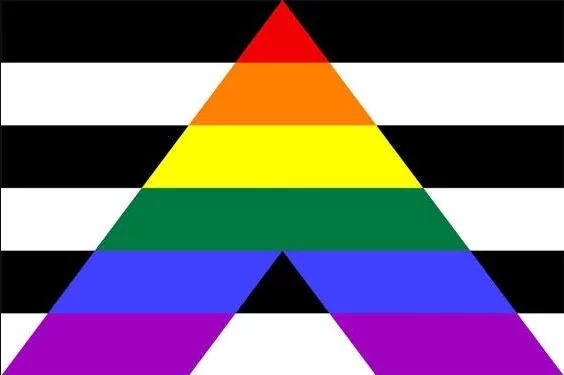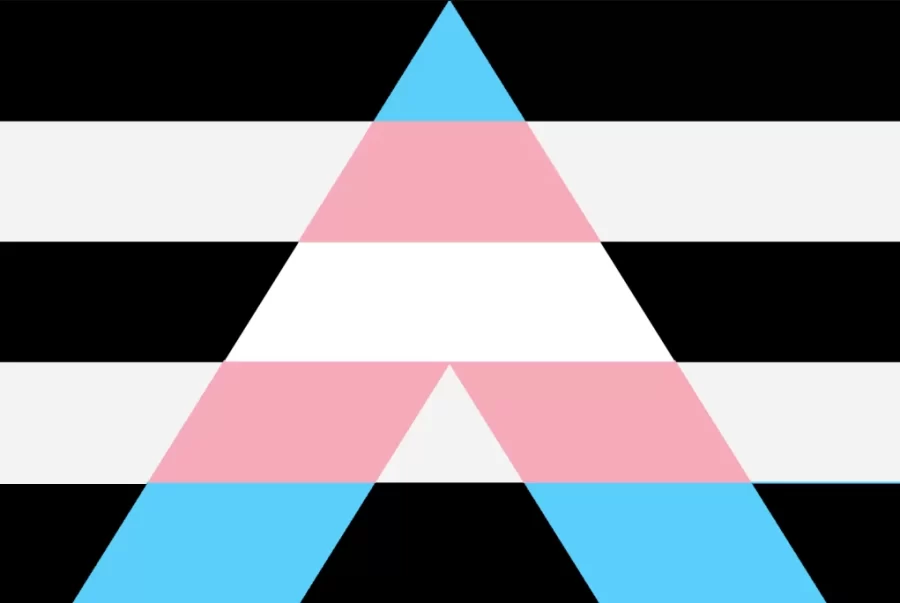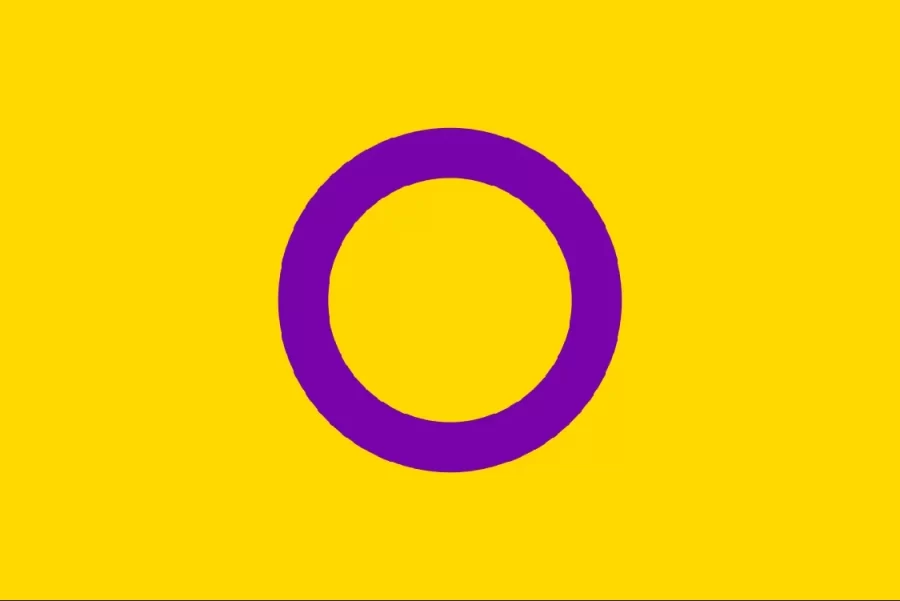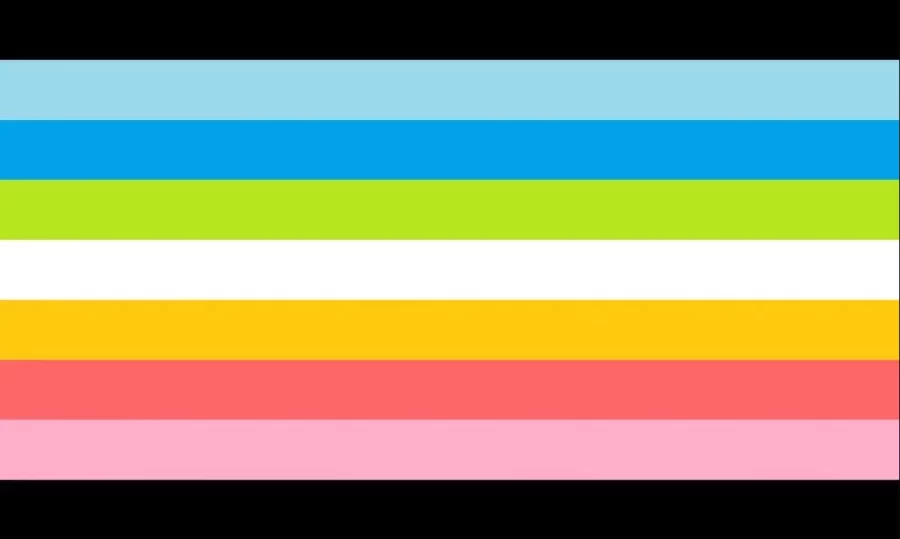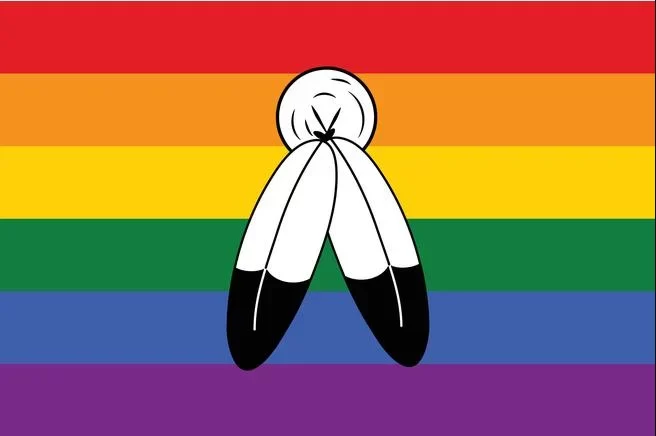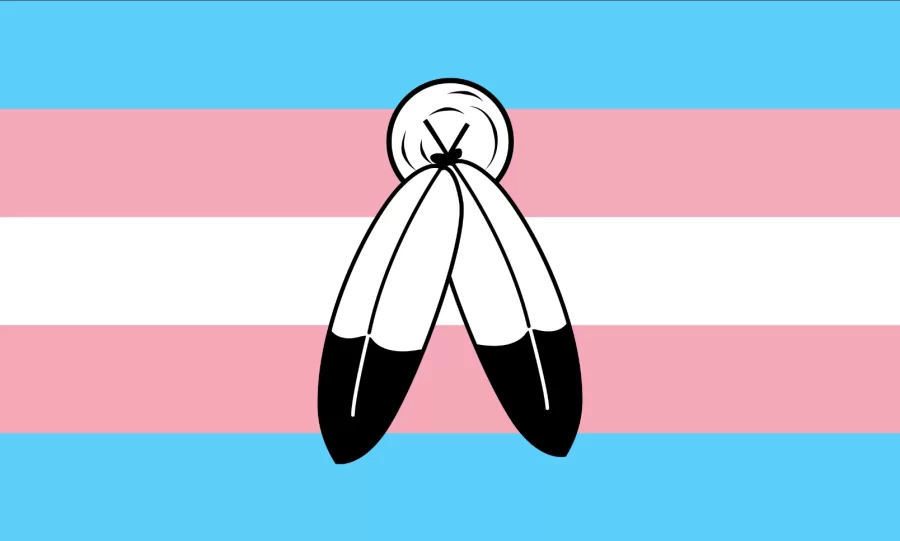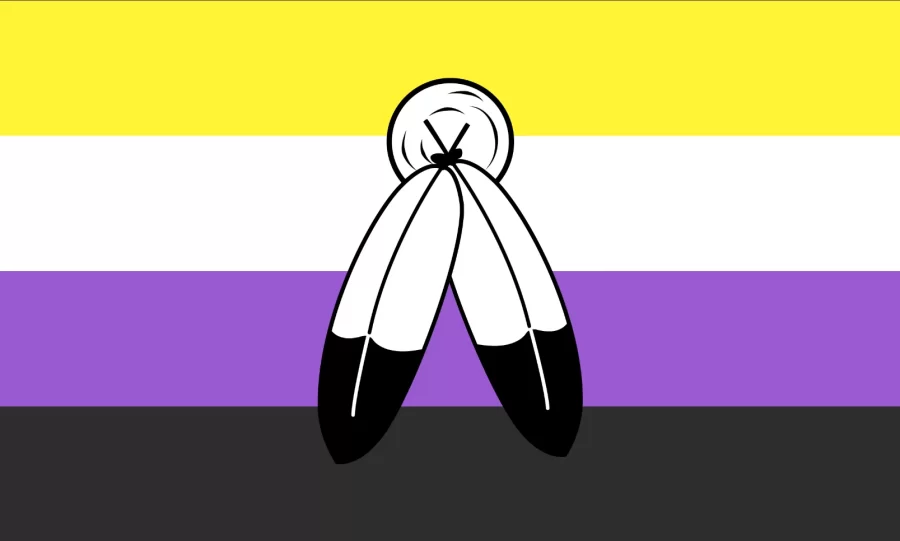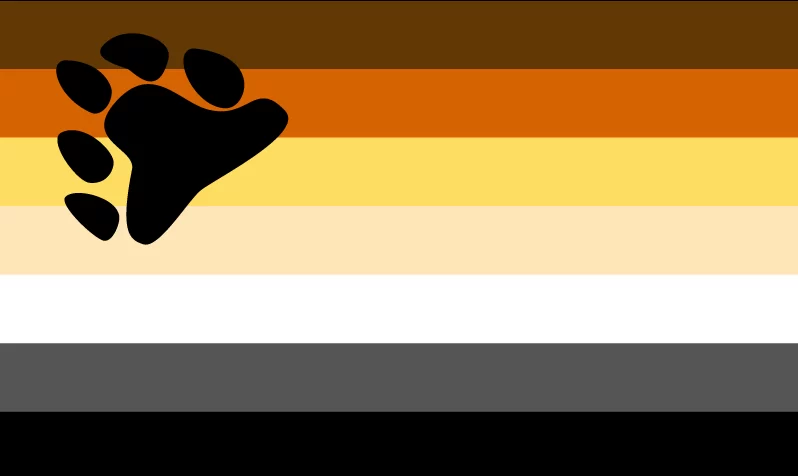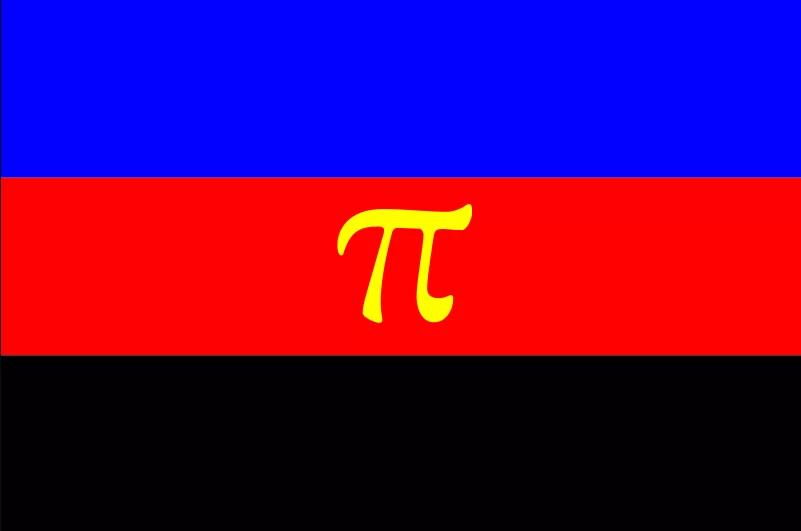Flags of the LGBTQ+ Community
There are different flags for the MANY identities that fall under the larger LGBTQ+ umbrella. Below are just some and there are many great resources to learn more. Since flags are community created and accepted, they change and evolve over time. We will do out best to ensure our images and descriptions have as much correct information. If there is something incorrect, do not hesitate to reach out to us at oie@bates.edu
Additional resource used in creating this list include:
Rainbow and community pride
8-stripe rainbow pride flag
At a time of continued advocacy and unifying LGBTQ+ peoples, politician Harvey Milk asked artist and activist Gilbert Baker to create a symbol for that unifies the LGBTQ+ community. Baker chose a flag, which he believed to be the most impactful and intentional symbol of pride.
The stripes for this flag reflect the following:
- hot pink for sex
- red for life
- orange for healing
- yellow for sunlight
- green for nature
- turquoise for art
- indigo for harmony
- violet for spirit
6-stripe rainbow pride flag
After Harvey Milk’s assassination in 1978, there was a demand increase for the flag. The material used for the flags, some the pink was not readily available, thus, to meet production needs, they pink stripe was dropped.
In 1979, the six-striped Rainbow pride flag was adopted as a standard symbol for pride, turquoise was dropped and has and continues to be used as a symbol for pride, and especially ease of mass production.
The stripes for this flag reflect the following:
- red for life
- orange for healing
- yellow for sunlight
- green for nature
- blue for harmony
- violet for spirit
Philadelphia pride flag (Philly pride flag)
The Philadelphia pride flag is a symbol of inclusion. It was created and proposed in 2017. The addition of the black and brown stripes to the six-striped rainbow flag to call attention to concerns affecting LGBTQ+ people of color. It was originally introduced as part of a citywide “More Color More Pride” campaign — and was borne of protest after several high-profile stories exposing racism in Philly’s Gayborhood.
The stripes for this flag reflect the following:
- red for life
- orange for healing
- yellow for sunlight
- green for nature
- blue for harmony
- violet for spirit
- Black and brown: inclusion of BIPoC experiences
QTPoC pride flag
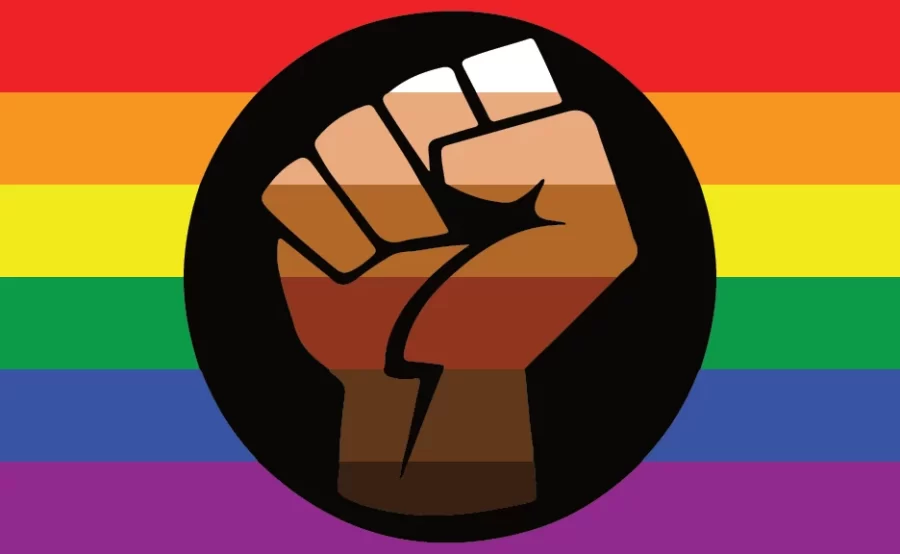
The creator of this flag is unknown, however it gained popularity in 2020, in response towards solidarity with the BLM movements.
This flag represents queer and trans people of color (QTPoC) and emphasizes how the black and queer/trans queer community are often woven together, currently and even in the earliest days of the Queer Liberation Movement. The stripes on the first represent the varying shades of the “human rainbow”.
The raised fist is often used as a symbol solidarity, support and community defiance and unity against oppressive structures.
Progress pride flag
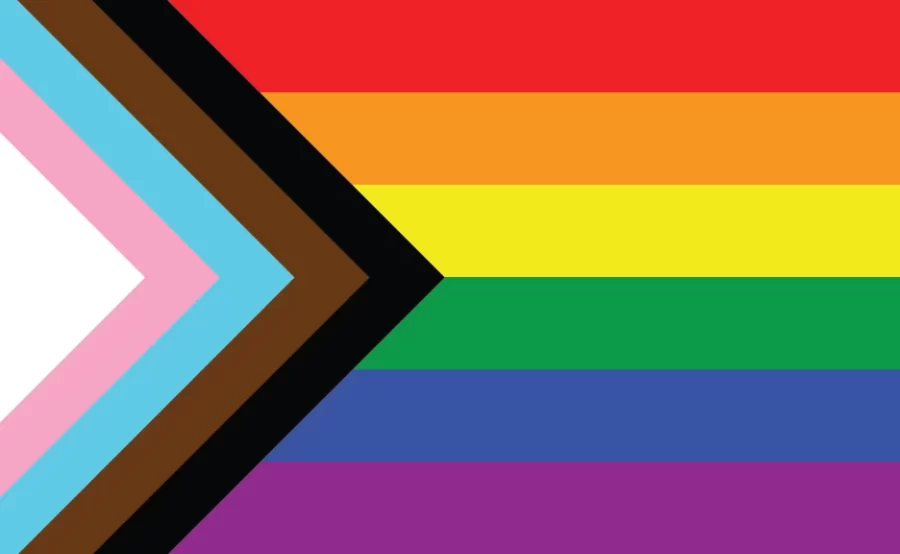
Daniel Quasar is credited for creating this iteration of the Progress Pride flag in 2018.
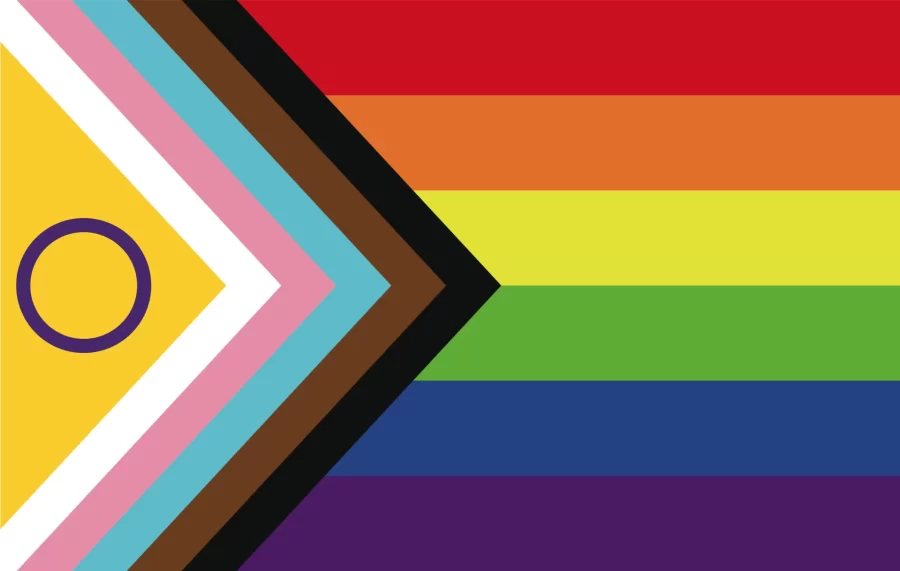
Valentino Vecchietti is credited for designing this iteration of the Progress Pride flag in 2021.
This updated community pride flag, which was inspired by the 6-stripe pride flag, the Philadelphia Pride flag, and the transgender pride flag to reflect the diversity of the overall LGBTQ+ community.
The most updated/current version of this flag is similar in design to the Progressive Pride Flag, but now includes elements from the Intersex Pride Flag: the yellow and purple circle.
Sexual/Romantic Identity Pride flags
Lesbian pride flag
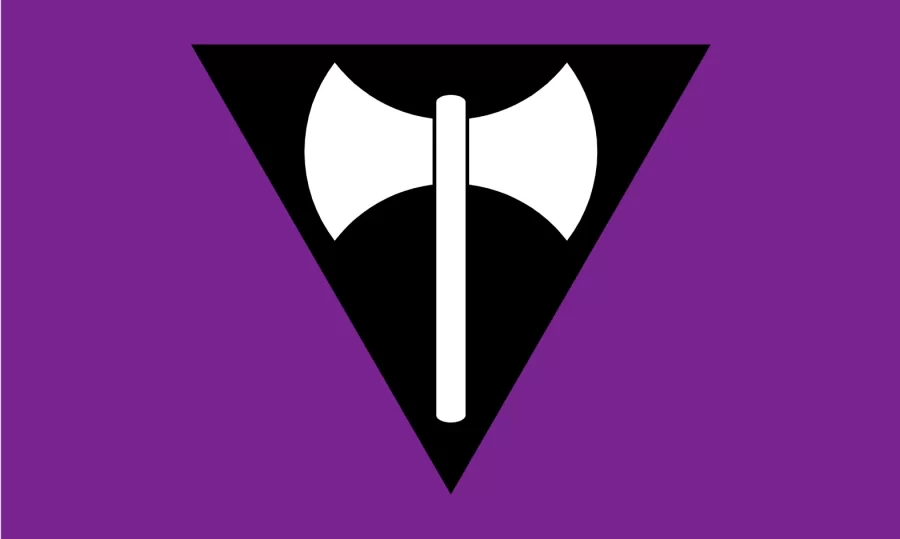
Sean Campbell is credited for creating this flag in 1999.
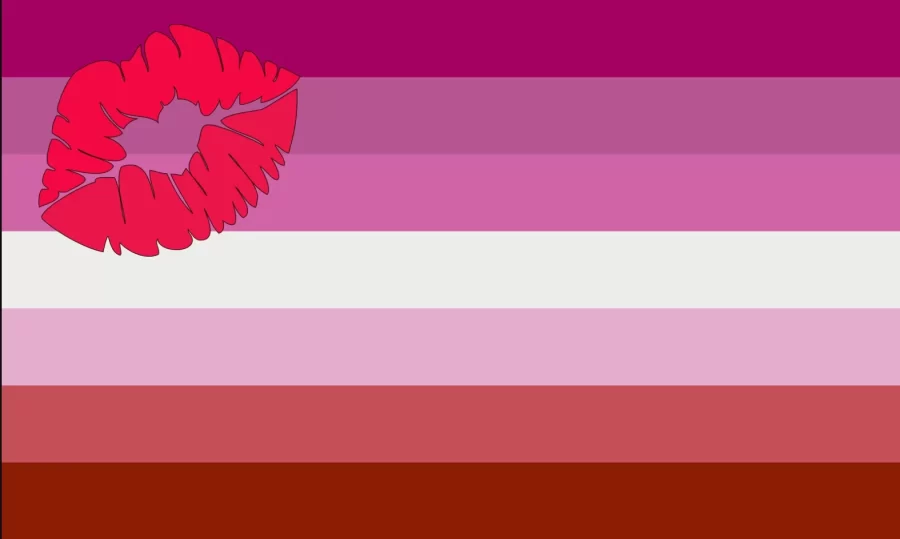
Natalie McCray is credited as the creator of this flag in 2010.
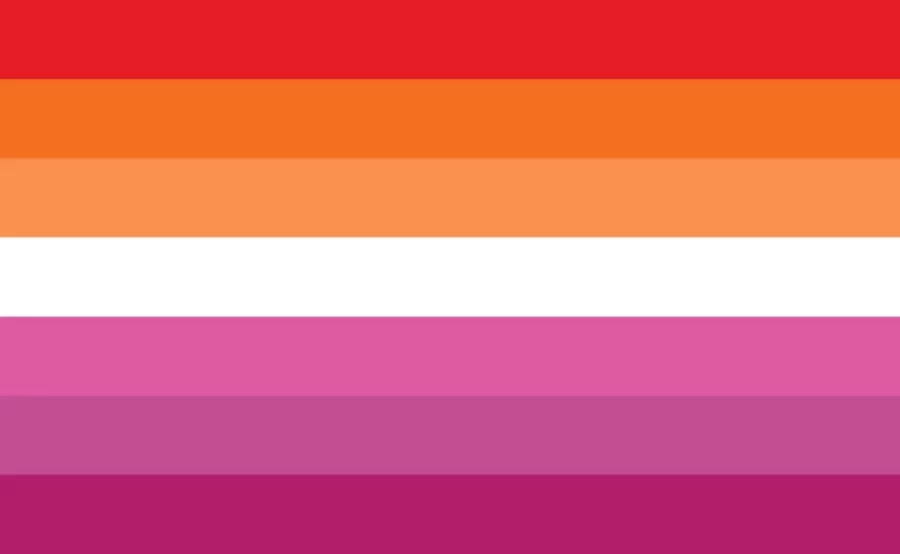
Emily Gwen is credited for creating this flag in 2018.
The Lesbian pride flag has had several iterations throughout the years. The first was a Labrys Lesbian flag and used throughout most of the early 2000s. Around 2010, the “Lip-stick lesbian” pride flag was proposed. However, this version was not well received by many in the WLW community due to it being exclusionary towards non-feminine of center, trans women, and other non-cis queer women. In response to the creator’s transphobic, racist and biphobic beliefs, the 2018 version of the flag was created with the intention to be more inclusive and representative of the wider women-loving-women community.
The flag stripes for this flag reflect the following:
- dark orange for gender non-conformity
- middle orange for independence
- light orange for community
- white for unique relationships to womanhood
- light pink for serenity and peace
- middle pink for love and sex
- dark pink for femininity
Trans Inclusive gay men’s pride flag

This is the older proposed version of this flag. Not widely accepted.
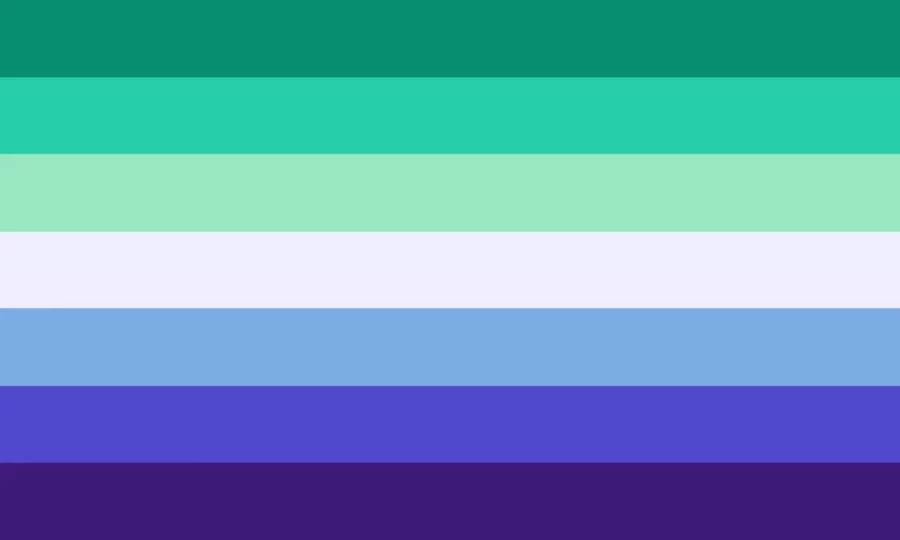
This version of the flag was created by tumblr user, gayflagblog in 2019.
The first proposed gay men’s pride flag has a challenging upbringing. It’s creation was rooted in exclusion of non-masculine men and non-cisgender men. Other challenges included: no meaning behind stripe colors.
The second version of the Gay Men’s Pride Flag, where it’s creator proposed the currently community accepted version in 2019. This version has different shades of green and blue that is intentional about inclusion of non-cisgender gay men and non-hypermasculinity.
The stripes for this flag reflect the following:
- green for community
- teal for healing
- mint for joy
- white for non-cisgender gay men
- light blue for pure love
- purple for fortitude
- Indigo for Diversity
Bisexual pride flag
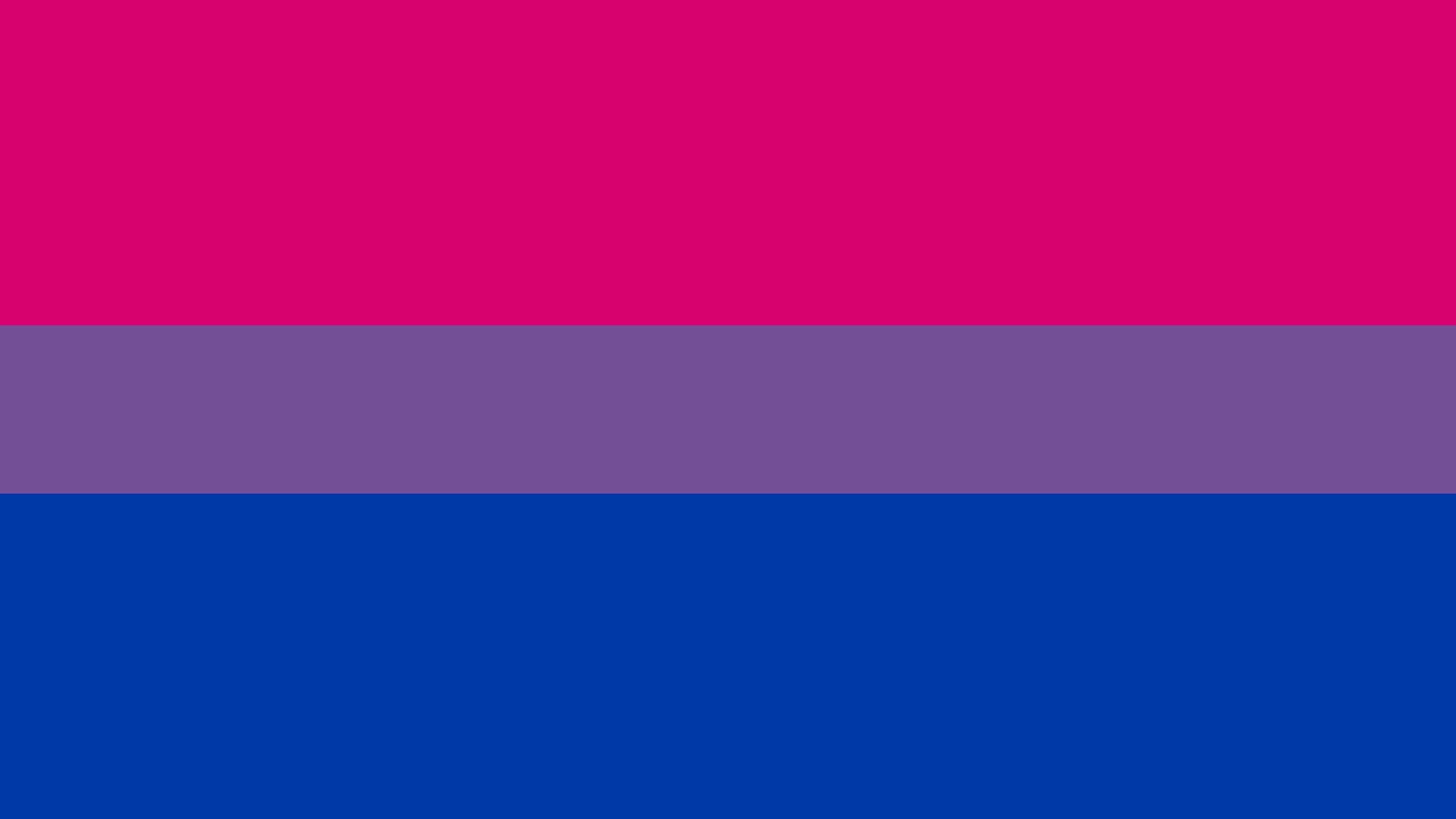
Michael Page is credited for creating the Bisexual Pride flag in 1998.
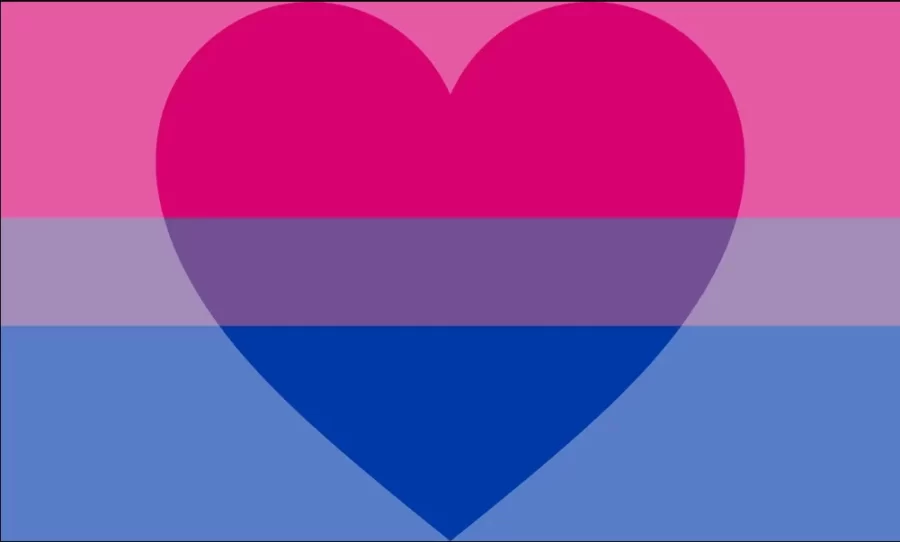
Biromantic Pride, originally coined between 1995-2000 and more widely accepted in 2005.
The Bisexual pride flag was created to bring awareness and visibility of individuals who are sexually attracted to people of more than one gender-identity/experience. Bisexuality has a history of stigmatization but in the current days, represents more than 50% of US adults who identity as not-straight. [Pew Institute, 2023].
The Biromantic pride flag is similarly intentioned as the Bisexual pride, but to emphasize the romantic attraction to people of more than one gender identity/experience. The flag used same color scheme as the Bisexual flag, but has a large hear in the center to signify romantic attraction.
The stripes for this flag reflect the following:
- magenta for attraction to the same gender
- purple for attraction to two or more genders
- blue for attraction to the “opposite” or differing gender
Pansexual pride flag
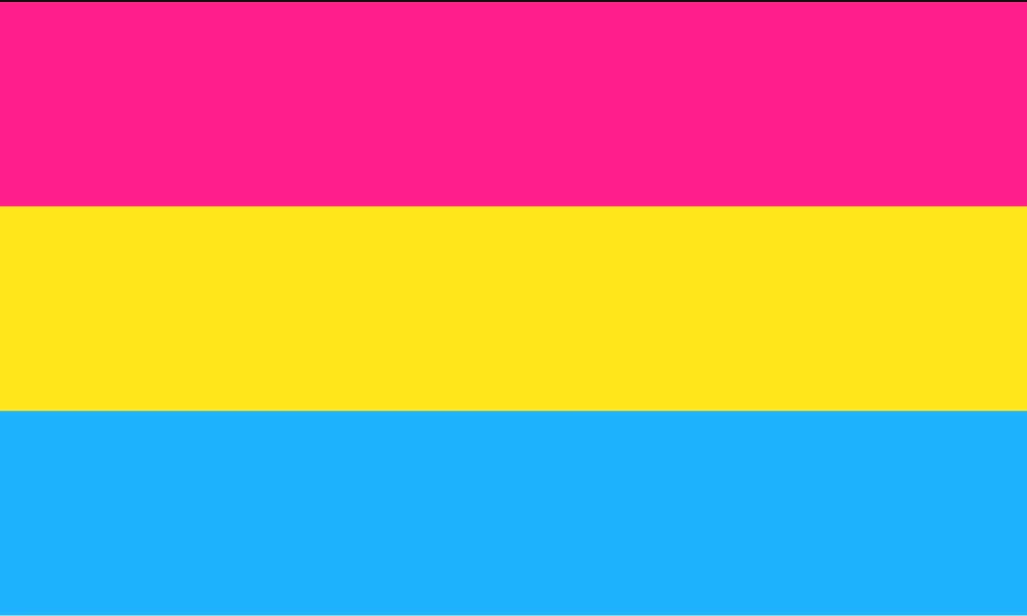
Unclear of original creator, but this flag made it’s debut in 2010.
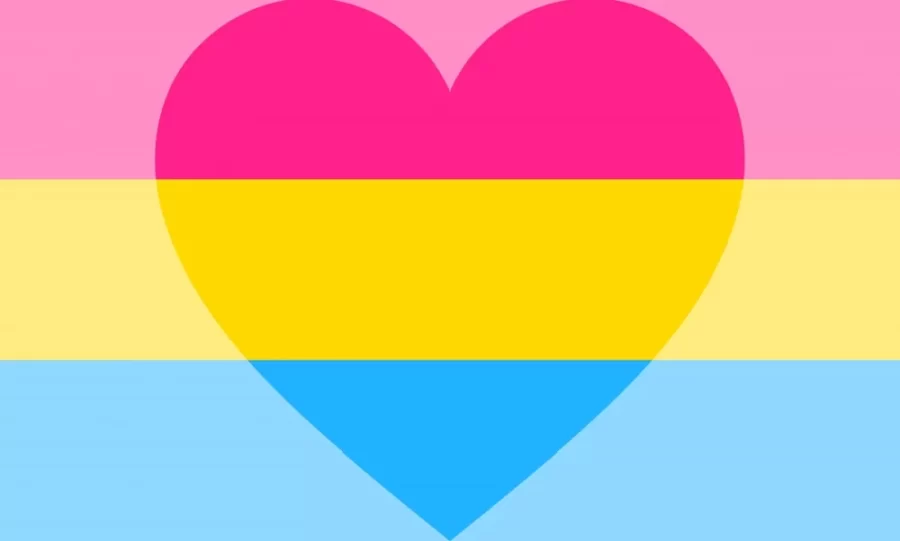
Mod Hermy of the DeviantArt account Pride-Flags is credited for this iteration of the panromantic pride flag.
The Pansexual pride Flag was created around 2010 in order to bring awareness to the community who experience sexual attraction to people of any gender; though not necessarily at the same time, in the same way or to the same degree.
The Panromantic pride flag is similar to the Pansexual pride flag, but this one emphasizes the individual’s emotional and romantic attraction to people of any gender.
The stripes for this flag reflect the following:
- pink for attraction to women
- blue for attraction to men
- yellow for attraction to people of other gender identities/experiences
Asexual “Ace” pride flag
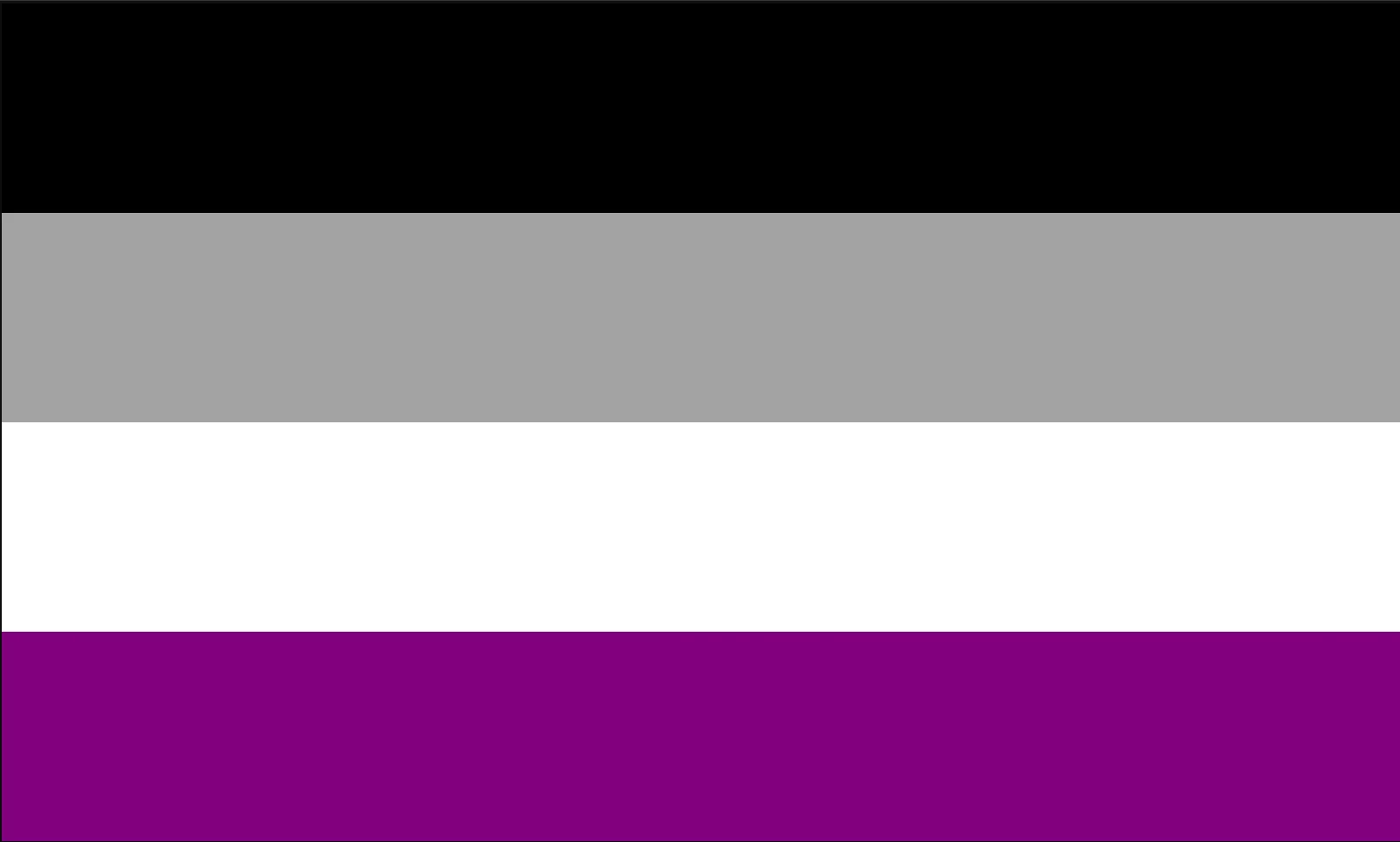
The Asexual Pride Flag was created in 2010 following a contest by the Asexual Visibility and Education Network.
Asexuality is an umbrella term for a multitude of different experiences and relationships to sexual identity. Asexual individuals live on a spectrum, where some asexual individuals do not experience sexual attraction to others while others have little to minimal sexual attraction. Sadly, there continues to be misconceptions and stigma about asexual individuals.
The stripes for this flag reflect the following:
- black for asexuality
- gray for gray-asexuality & demisexuality
- whites for non-asexual partners and allies
- purple for community.
Aromantic “Aro” pride flag
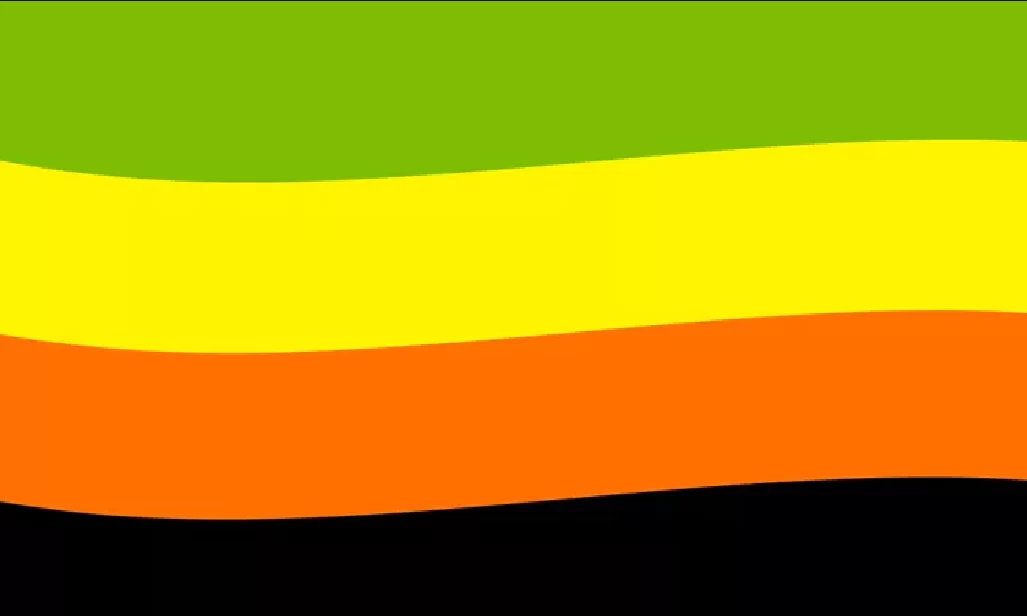
First iteration of the Aromantic pride flag. Creator is unknown. Not popularly used.

Tumblr user, CameronWhimsy is credited as the creator of this flag in 2014.
Aromanticism is an umbrella term for a multitude of different experiences and relationships to romantic identity. Aromantic individuals live on a spectrum, where some aromantic individuals do not experience romantic attraction to others while others have little to minimal romantic attraction. Sadly, there continues to be misconceptions and stigma about aromantic individuals.
The stripes for this flag reflect the following:
- dark green for aromanticism
- light green for the aromantic spectrum
- white for platonic attraction and relationships
- gray for gray-aromantic people
- black for the sexuality of the spectrum
Demisexual pride flag
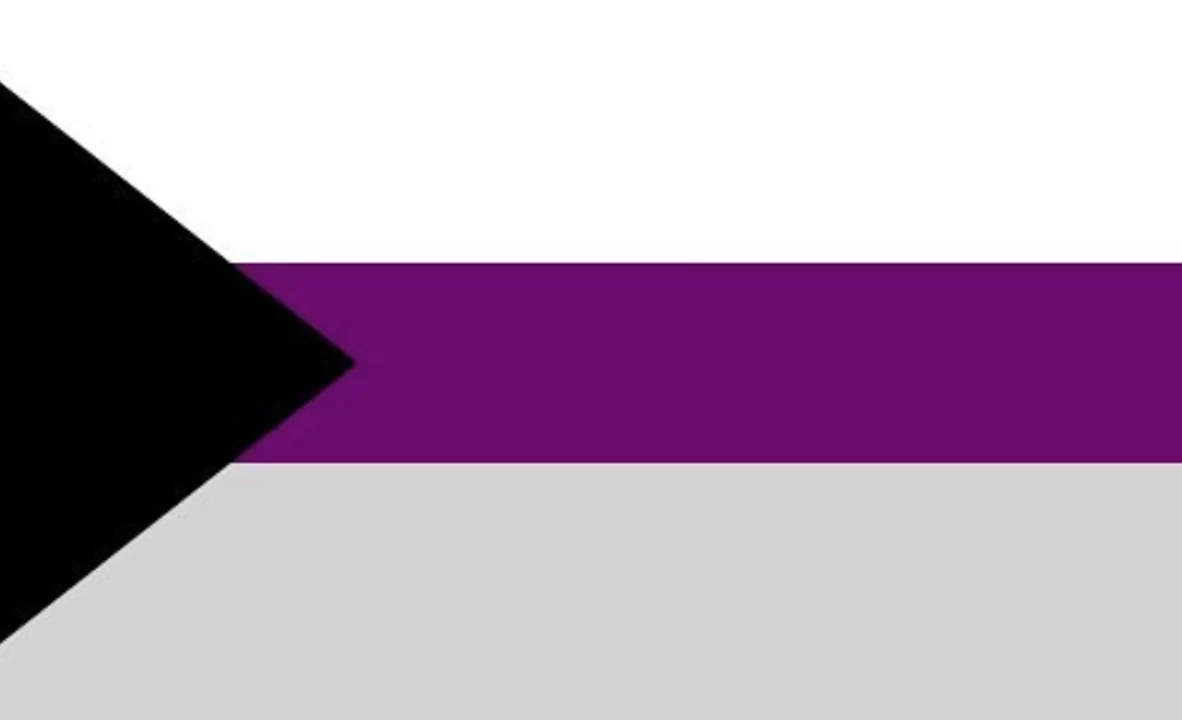
The original creator of the Demisexual flag is unknown, but the term was coined by an AVEN forums user, Sonofzeal in 2006.
Demisexuality is an identity under the Asexual umbrella. This identity refers to a sexual orientation where an individual might feel sexual attraction once they’ve formed a deep emotional bond with another person. This flag contains the same colors as the Asexual flag, and the colors also have the same meanings.
Demiromantic pride flag
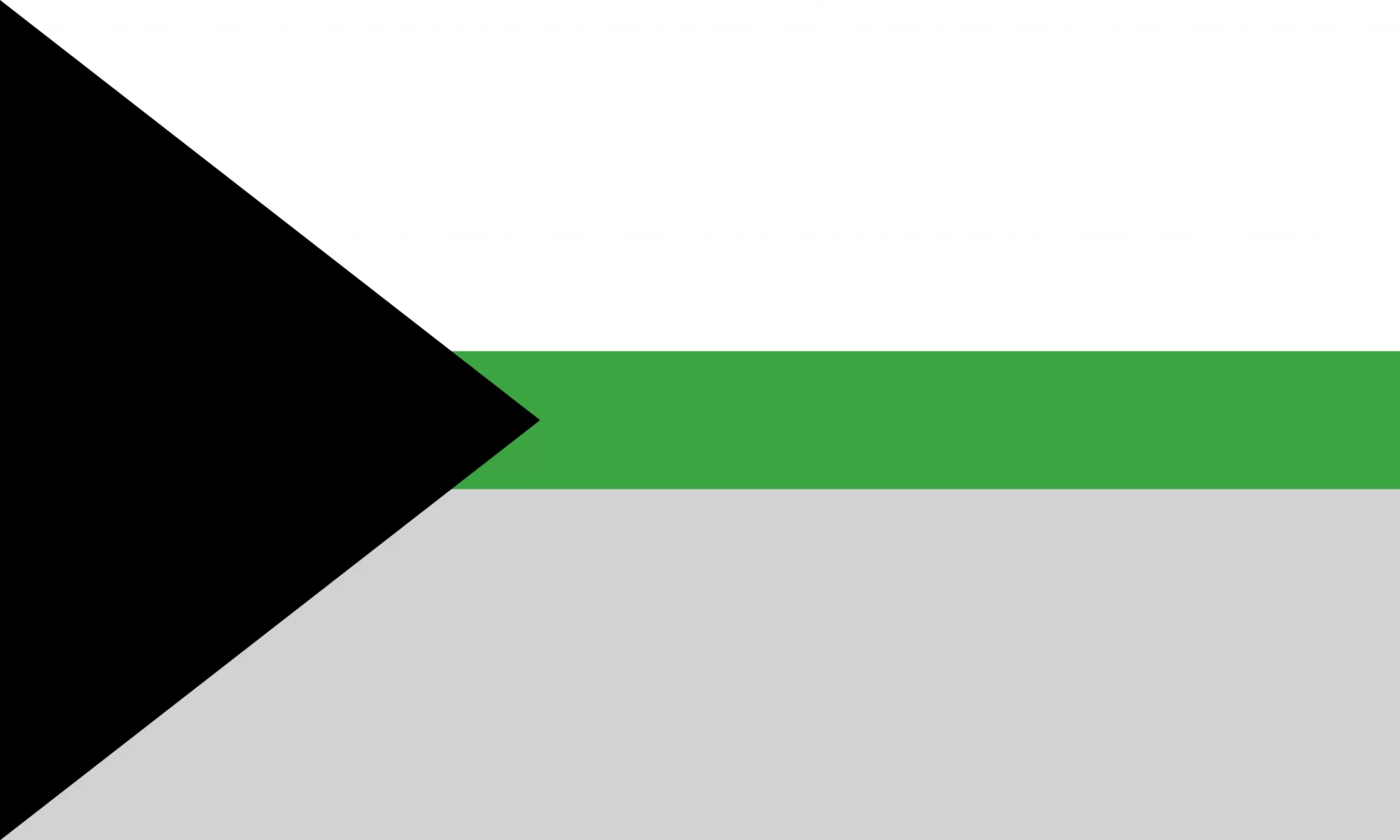
The original creator of the Demiromantic flag is unknown, but the term was coined by an AVEN forums user in 2011.
Demiromanticism is an identity under the Aromantic umbrella. This identity refers to a romantic orientation where an individual might feel romantic attraction once they’ve formed a deep emotional bond with another person. This flag contains the same colors as the Aromantic flag.
The stripes for this flag reflect the following:
- black for the sexuality spectrum as a whole
- gray for gray-aromanticism and demiromanticism
- white for platonic and aesthetic attraction, queer/quasi platonic relationships, or being outside the straight-gay and male-female binaries
- green for demiromanticism, or the aromantic spectrum
Gender Identity pride flags
Transgender (Trans) pride flag
The Transgender pride flag was first shown at a pride parade in Phoenix, Arizona in 2000. According to it’s creator, the pattern of the stripes is such that no matter which way you fly the flag, it will always be “correct”, signifying trans people finding “correctness” in their lives.
Note: Trans/transgender is also understood as an umbrella term, encompassing a wide range of identities, including but not limited to: nonbinary, genderqueer, genderfluid, and more.
The stripes for this flag reflect the following:
- light blue for boys and men
- pink for girls and women
- white for individuals who are intersex, transitioning, nonbinary, and agender
Genderqueer pride flag
Individuals who identify as genderqueer do not embrace stereotypical norms of gender expression. Gender is a personal decision that should not be prescribed/dictated by society. In its original inception, the genderqueer flag was intended to represent both non-binary and genderqueer communities.
Note: This identity is considered a part of the transgender & Nonbinary umbrellas, however, not all genderqueer people identify as trans or nonbinary.
This stripes for this flag reflect the following:
- lavender for androgyny
- white for agender identities
- dark green for third-gender identities, or those that fall outside of gender binaries
Genderfluid pride flag
Individuals who identify as genderfluid encompass and embrace the fluctuations and the flexibility of gender. For some genderfluid individuals, gender changes are arbitrary, while for some, they’re extreme. Gender fluctuations may happen slowly over a period of months or years, or they may happen fast in a matter of hours or days. The flag is designed to encompass multiple gender identities.
Note: This identity is considered a part of the transgender & Nonbinary umbrellas, however, not all genderfluid people identify as trans or nonbinary.
The stripes for this flag reflect the following:
- pink for femininity
- blue for masculinity
- purple for femininity and masculinity
- black for lack of gender
- white for multiple/all genders
Nonbinary pride flag
The genderqueer pride flag was intended to represent nonbinary people. However, with the growth of the genderqueer community, it became more synonymouswith them. Thus, not all nonbinary people felt represented by the Genderqueer Pride flag. The currently community accepted flag was created and proposed, not to replace the genderqueer flag, but to compliment it.
Note: This identity is considered a part of the transgender umbrella, however, not all nonbinary people identify as trans.
The stripes for this flag reflect the following:
- yellow for people who identify outside of binary genders
- white for people who identify with many or all genders
- purple for people who consider their identity a mix of binary genders, or whose identity falls somewhere in between the two binaries
- black for people who don’t feel an attachment to any gender
Agender pride flag
Agender individuals do not identify with any specific gender expectations and understandings. Some do not identify with any specific gender, others as gender-neutral.
Note: This identity is considered a part of the transgender & Nonbinary umbrellas, however, not all agender people identify as trans or nonbinary.
The stripes for this flag reflect the following:
- black & white for absence of gender
- gray for in-between state of semi-genderlessness
- green for nonbinary genders
Other identities/communities
LGBTQ+ Ally flag
This flag was created for heterosexual and cisgender allies to show their support and care for the LGBTQ+ community.
The stripes and colors of the flag reflect the following:
- black and white stripes represent the straight flag.
- The letter ‘A’ represents ally
- rainbow colors in the letter ‘A’ are for the LGBT community
- pink, blue and white colors in the letter A are for allyship to the transgender community
Intersex flag
The Intersex flag was created by Intersex Human Rights Australia (then known as Organization Intersex International Australia) with the intention for it to “not [be] derivative but is firmly grounded in meaning”. The colors yellow and purple were chosen since they were socially viewed as free from gender associations and have been historically used to represent intersex people. The purple circle is described as “unbroken and unornamented, symbolizing wholeness and completeness, and our potentialities.”
Queer pride flag
The intention for this flag is to bring together multiple aspects of queerness. The Human Rights Campaign (HRC) has suggested that the stripes reflection the following:
- pink and blue stripes represent same-gender attraction
- orange and green stripes represent non-binary and gender non-confirming individuals
- black and white stripes represent asexual, aromantic, and the agender community
Two-Spirit flag
Two-Spirit refers to a strictly Native identity that describes a person who identifies as having both a masculine and feminine spirit. It can be understood as an umbrella term used by some Indigenous/Native people as a way to describe their sexual, gender, and/or spiritual identity.
In this flag, the circle denotes unity in one, while the two feathers signify woman and man.
There are many great resources to learn more about two-spirit history and meaning. Here are a few:
Bear pride flag
This flag represents a community of often larger bodied, hairier men (body and facial hair). It was created to promote inclusivity, acceptance, and a celebration of non-conventional masculinity, expression, and body types. The colors of this flag were made to represent different animal hair colors, not necessarily human hair and skin tones. The intention of this subgroup and flag was rooted in the diversity and inclusion of the overall community.
There are further subgroups within the bear community, all connected to some animal identity, including but not limited to:
- cub: a younger bear or those less hairy bear
- otter: slim, hairy men
- bulls: a hairless bear or muscle bear. Beefier and more muscular than a shark.
- chaser: a slimmer man who is attracted to bears, but does not identify as a bear.
- daddy: A typically dominant, mature, older bear. (not age specific)
- dolphin: A slender, athletic, hairless bear.
- twink: a young or young-looking man with little or no facial or body hair.
- wolf: a more aggressive, dominant, and slender hairy bear.
Polyamory pride flag
Polyamory is a non-monogamous relationship type that is one in which one or more of the participants are involved romantical and/or sexual relations with more than one individual at a time. This is not a strictly LGBTQ+ identity/experience.
The stripes for this flag reflect the following:
- blue for openness and honesty
- red for love and passion
- black for solidarity with those who must hide their polyamorous relationships from the outside world
The pi symbol has multiple interpretations, ranging from “infinite love” to it sharing the same starting letter. As for the gold color, it is widely accepted to represent the value that we place on the emotional attachment to others, be the relationship friendly or romantic in nature, as opposed to merely primarily physical relationships.
